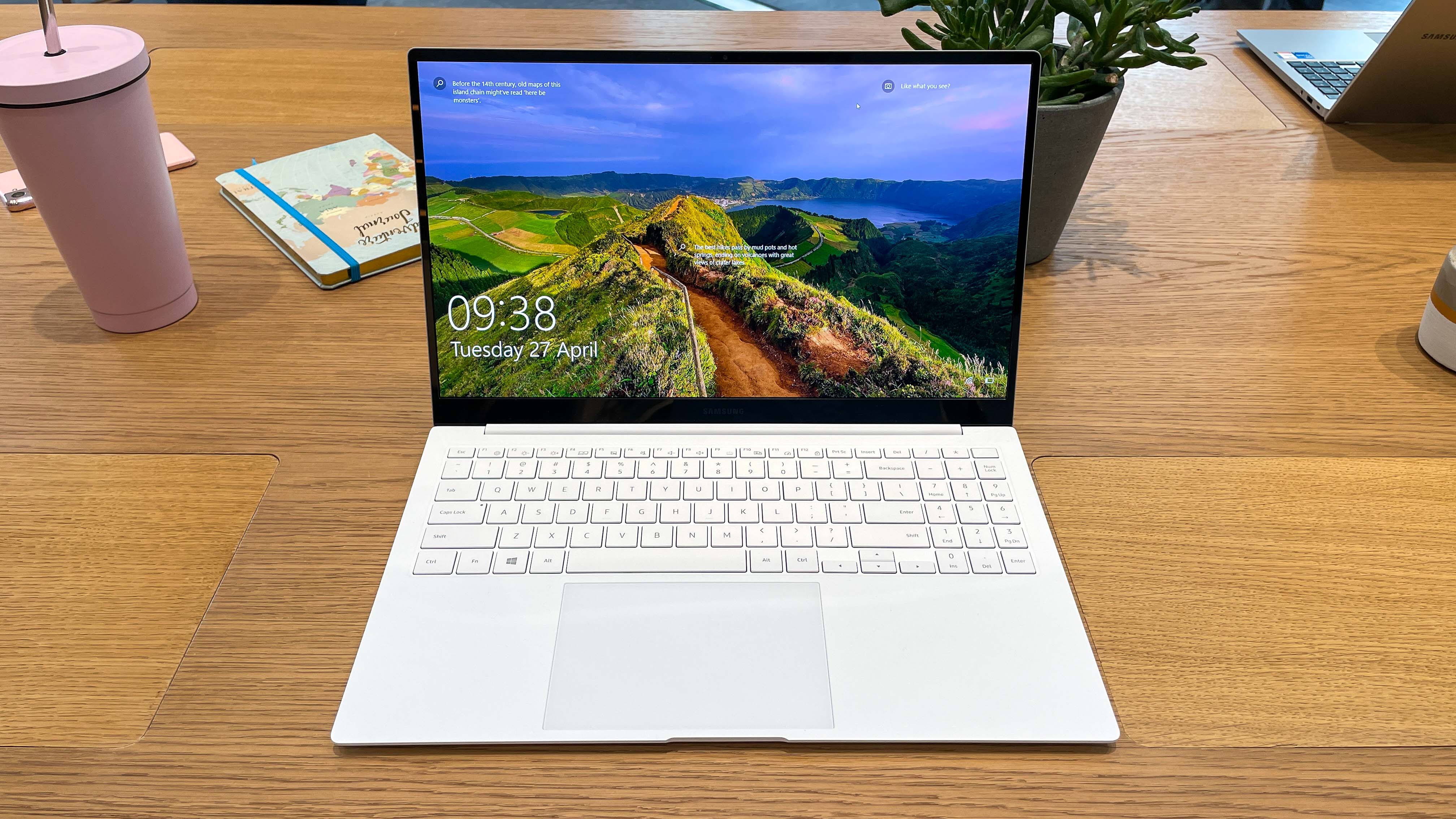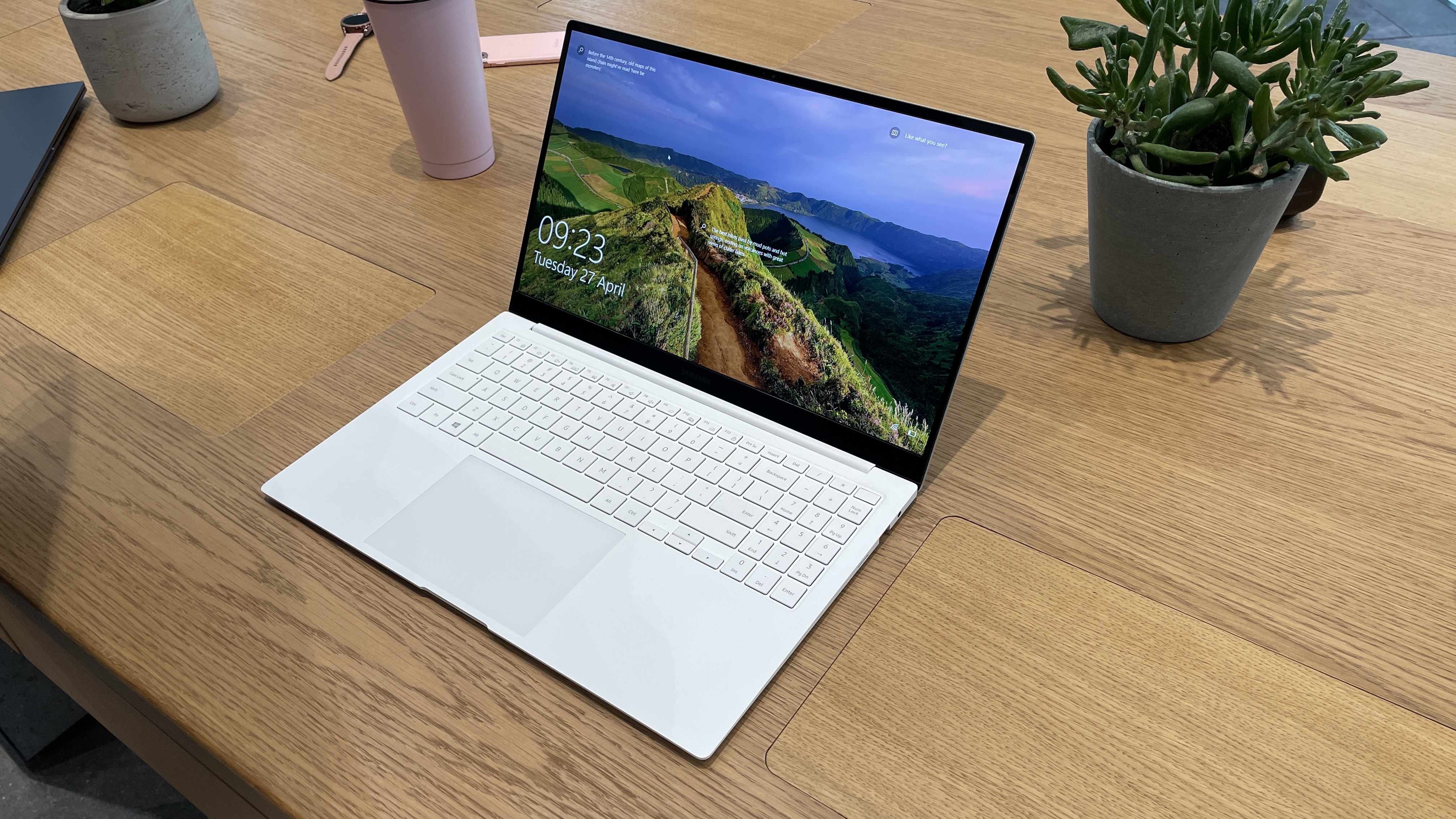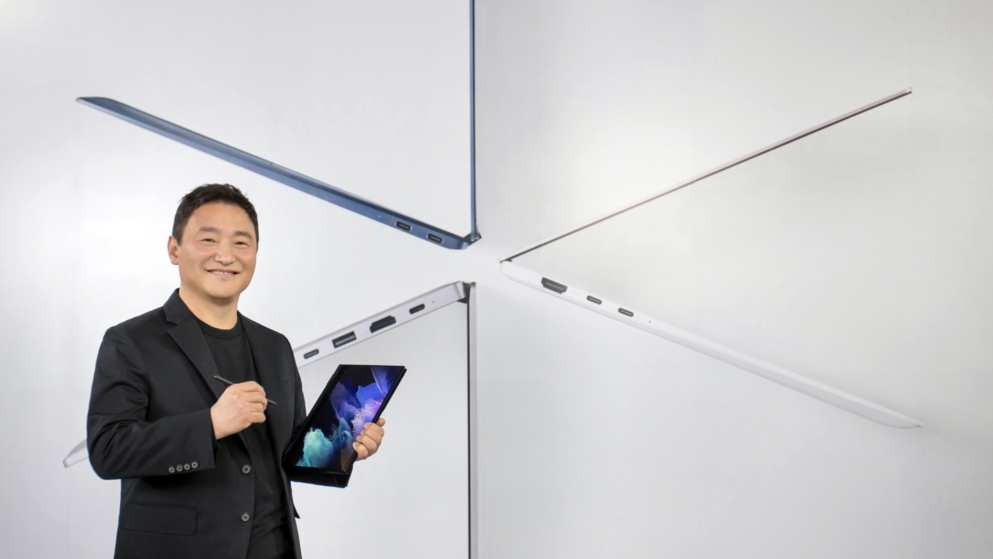Samsung’s Galaxy Book Pro is poised to shake up laptops — including MacBooks
With AMOLED screens and tight Samsung phone integration, Samsung's Galaxy Book Pro laptops could be huge

If I were to ask you what Samsung is best known for, you’d probably say Samsung phones. You might say Samsung TVs, or screens in general, and you wouldn’t be wrong.
But you probably wouldn’t say laptops, and with good reason: despite being in the business for decades and making some pretty great hardware, Samsung has never established itself as a high-profile player in the U.S. laptop market.
- Best Samsung phones: Which Galaxy model should you buy?
- MacBook Pro mini-LED delay may not happen — here's why
- Plus: Nvidia GeForce RTX 3050 Ti laptop graphics specs just leaked
That could be about to change. Recently Samsung hosted its first-ever Galaxy Unpacked event focused purely on unveiling new laptops. There's four new Windows machines — the entry-level Galaxy Book, the flagship Galaxy Book Pro and Galaxy Book Pro 360, and the gaming-focused Galaxy Book Odyssey — all packing beefy components into svelte, attractive frames.
These new notebooks are exciting because they look thin, light, and (if configured appropriately) powerful -- three compelling qualities shared by the best laptops on the market. Leading manufacturers like Apple and Dell have carved out dominant positions in the business by shipping lightweight laptops with beautiful displays, and now Samsung -- which already has a well-earned reputation for building phones and tablets with gorgeous screens -- seems well-positioned to do the same.
But can Samsung finally make some real noise in a market where it has struggled in the past? The prospects are stronger than you might think.
When the screen hits your eyes like a vibrant sunrise, that's AMOLED
Notably, two of Samsung’s new laptops -- the Galaxy Book Pro and Galaxy Book Pro 360 -- sport AMOLED screens, which are still a rarity in the laptop market. I think AMOLED displays are going to be the next big thing in laptop design, and the few laptops with OLED screens we’ve tested -- among them Samsung’s own Galaxy Chromebook -- have wowed us with their vibrant colors and deep blacks.
Laptops all tend to look and feel the same, but Samsung’s OLED displays are still fairly unique — and it is smartly adding ties to its mobile ecosystem that most competitors can’t match. — Avi Greengart, Techsponential
Of course, OLED displays have downsides -- they can be expensive to integrate; they can be battery hogs; and they have a low risk of permanent burn-in if you leave them on for ages. But those are small prices worth paying for great screens that can also achieve greater thinness than traditional LED displays, due to the fact that OLEDs don’t need to be backlit.
Get instant access to breaking news, the hottest reviews, great deals and helpful tips.

And now that Samsung has spent years refining its OLED technology and production processes, the company seems well-positioned to apply that expertise to building laptops. Early this year it announced plans to begin mass-producing the world’s first 90Hz OLED laptop screens in March, with an initial focus on 14-inch displays. Samsung says it expects a number of other companies to release laptops with 90Hz OLED screens this year, and it’s a safe bet that its own Galaxy Book Pro and Pro 360 will serve as a showcase for these new displays.
If the screens on these new Galaxy Book Pros look anything like the gorgeous 4K OLED display we saw on Samsung’s Galaxy Chromebook earlier this year, they’re sure to stand out -- and that’s exactly what Samsung needs if it wants to build a bigger presence in the US laptop market.
"Laptops all tend to look and feel the same, but Samsung’s AMOLED displays are still fairly unique – and stunning – and it is smartly adding software and ties to its mobile ecosystem that most competitors can’t match,” said Avi Greengart, lead analyst at Techsponential. “Samsung needed to do two things for its laptops: raise visibility and find differentiation, and they’ve done that well here."
Of course, not all of the new Galaxy Books have AMOLED screens; both the budget-minded Galaxy Book and the gaming-focused Galaxy Book Odyssey will ship with more traditional 15.6-inch TFT LCD displays. LCD screens can still deliver impressive performance, and there are unique features to the Book and Book Odyssey that could help them stand out in 2021’s crowded laptop lineup -- though it’s yet unclear when or if either will be made available for sale in the US. So far Samsung has only told us that the Galaxy Book Odyssey is going on sale in Korea at first, with no further details on whether it will appear state-side.
The Galaxy Book Odyssey is most notable for being the first laptop we’ve seen to include Nvidia’s new GeForce RTX 3050/3050 Ti GPUs, which could help it deliver remarkable performance in the latest games. The Odyssey chassis is also designed to let you upgrade or swap out the RAM and SSD, a much-appreciated feature we rarely see in modern laptops.

The Galaxy Book offers owners the same option to swap out their SSD, and while it has the lowest performance floor of all the Galaxy Books Samsung announced this week -- the Galaxy Book will be available with low-end Intel Celeron or Pentium Gold CPUs in some regions -- it also has the smallest price tag, coming in as low as $549 for an entry-level model. That gives this new Galaxy Book line of Windows PCs an entry point for folks who may not be willing to pay upwards of $1,000 for a new laptop, though again it’s yet unclear when or if the Galaxy Book will be sold in the U.S.
With unprecedented Galaxy phone integration, Samsung could beat Apple at its own game
What is certain is that Samsung is going hard on promoting the Galaxy Book Pro and Galaxy Book Pro 360 as flagship laptops here in the US. And while they seem to have enough power, beauty and slimness to compete with leading laptops from the likes of Apple, Dell, Lenovo, and HP, they also have something most Windows notebooks don’t: tight integration with mobile devices, especially if you happen to own a Samsung phone or tablet.
Both of the Galaxy Book Pro laptops will ship with support for Link to Windows and Microsoft Your Phone, apps which allow you to connect your laptop to your (Android) smartphone to do things like run phone apps directly on your desktop, take calls, and easily access your photos, messages, and notifications.
If you have a Galaxy Tab you can use the Galaxy Book Pro and Pro 360’s second screen feature to duplicate or extend your desktop over onto the Tab, giving you the luxury of a second screen without having to hook up an external display. Other built-in apps let you quickly move files, photos, and other content between your Galaxy devices, or locate Bluetooth-paired Galaxy devices like earbuds and phones.
Plus, the Galaxy Book Pro laptops ship with the SmartThings app so you can control SmartThings-compatible devices on the network (like appliances, lights, and thermostats) right from the laptop.

That’s a long, complicated way of saying the Galaxy Book Pro laptops should have a lot of neat ways of interacting with your Android devices, especially if those devices are made by Samsung. If these features work well, it will give Samsung device owners a compelling reason to make their next laptop a Samsung Galaxy Book Pro, and help these new laptops stand out in an otherwise crowded market.
If Samsung can really deliver on the PC+phone experience it will create a good competitive advantage over other PC makers — Carolina Milanesi, founder, The Heart of Tech
"If Samsung can really deliver on the PC+phone experience it will create a good competitive advantage over other PC makers given the user base they have in the smartphone market,” said Carolina Milanesi, founder and principal analyst at The Heart of Tech. “As much as the devices I think what will make the difference for Samsung will be the marketing and the channel presence. They have had good PCs over the past couple of years but their market push was limited to Korea and the US. Dedicating an event with TM Roh and positioning the PC as a core part of the ecosystem seems to signal a drastic change in how seriously they are taking this opportunity."
Time to wait and see
Of course, signaling is one thing; successfully executing is another. As exciting as it is to see Samsung making a big push into the laptop market — which is currently booming, thanks to COVID-19 — we have to wait and see if these new Galaxy Books can compete with what the big PC vendors bring to the table this year.

“Samsung wants to tell everyone that they are more serious about the laptop business. They have been in the laptop market for a long time, but they have downplayed up until recently,” explained Gartner research director Mikako Kitagawa. “Now the PC market is booming, and it is a great opportunity for them to get more traction in the laptop market.
However, Kitagawa isn't bullish on Samsung taking on the biggest players in computing. "I don’t believe the lineup today will make lots changes in the market overall, Kitagawa said. "Samsung might be able to increase the share in certain markets, but it will not make a big impact and definitely not [pose a] threat to the big 4 PC vendors, Lenovo, HP, Dell and Apple. It is good for consumers to have more product options, though.”
And there are lots of exciting laptop options already on the market this year: the beautiful Dell XPS 15, the comfy Microsoft Surface Laptop 4, and the absolute powerhouse that is the 13-inch M1 MacBook Pro, just to name a few. With lots more coming before 2021 is through, including the much-anticipated refresh of Apple’s 16-inch MacBook Pro (which desperately needs a hit of Apple Silicon), it will be intriguing to see if Samsung’s new Galaxy Book laptops can commandeer the attention — and wallets — of US customers.
- Samsung also makes some of the best Android tablets you can buy
- Don't miss our Galaxy Tab A7 review

Alex Wawro is a lifelong tech and games enthusiast with more than a decade of experience covering both for outlets like Game Developer, Black Hat, and PC World magazine. A lifelong PC builder, he currently serves as a senior editor at Tom's Guide covering all things computing, from laptops and desktops to keyboards and mice.
